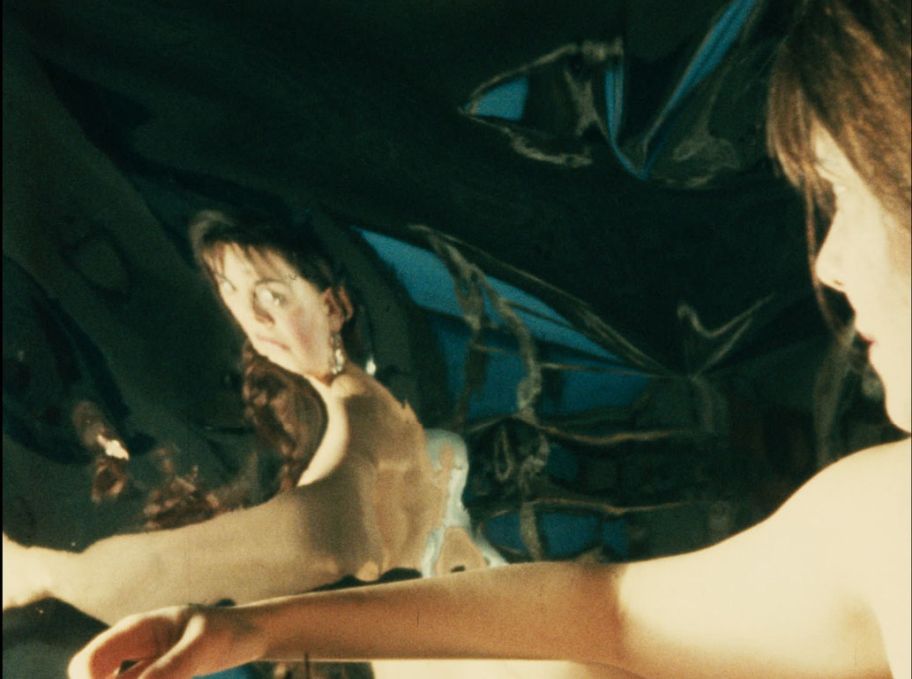Austria, Visual Arts, 1978
Maria
Lassnig
Maria Lassnig (b. 1919 in Kappel am Krappfeld, Carinthia; d. 2014 in Vienna) was a fellow of the DAAD Artists-in-Berlin Program (BKP) in 1978. She stayed on in the city until 1980, when she was appointed professor at the Hochschule für Angewandte Kunst (University of Applied Arts) in Vienna at the age of sixty-one. While still a student at the Akademie der bildenden Künste (Academy of Fine Arts) in Vienna, she had been expelled from a painting class in 1944 because her self-portrait was not painted in natural colors, and her art was denigrated as “entartet” (degenerate). In the 1950s, Lassnig painted abstract works that were influenced by Art Informel and Surrealism, but she struggled to compete with her more successful male colleagues. Having lived in Paris for several years in the early 1960s, Lassnig moved to New York City in 1968; she took a two-year course in film animation and, working from home, made short films that are now regarded as milestones of avant-garde and feminist art. In and through her art—which did not gain institutional recognition until much later—Lassnig was searching for an internal reality that was more in her possession than the outside world; she found this, as she once said, “in the form of the body housing [she] inhabited.” She initially described her works as “introspective experiences,” and later referred to them as “body-awareness paintings.” Lassnig’s numerous self-portraits and nudes, created from the early 1960s onward and often rendered in lurid colors, focus on her own changing body in relation to themes of feminism, fertility, the human/animal relationship, the mother/daughter relationship, the fear of cancer, illness, pain, and death.
In October 1978 an exhibition of Lassnig’s work, organized by the Artists-in-Berlin Program and dedicated above all to her self-portraits with animals, was shown at Haus am Lützowplatz in Berlin; among the works on view were Selbstporträt mit aufgespießtem Schweinchen (1975), Woman Laokoon (1976), and Fliegen lernen/Learning to Fly (1968). The presentation was accompanied by a catalogue, published by the Artists-in-Berlin Program. On October 25, nine of Lassnig’s animated films were shown at the Arsenal cinema, including the ten-minute-long Art Education (1976), a feminist interpretation of famous paintings by the likes of Michelangelo and Vermeer. The following day, under the heading “Women Artist Filmmakers,” she screened works in the same venue by a group of New York artists who had expanded their creative practice to include the medium of film. Lassnig’s film presentation at the Arsenal was also where she met Ulrike Ottinger and Tabea Blumenschein. She later invited them to come to her studio on Käuzchensteig in Berlin’s Grunewald district, where she painted their portraits.
In 1980 Maria Lassnig represented Austria at the Venice Biennale, together with Valie Export, and she also participated in documenta 7 and 10 (1982 and 1997). A first retrospective of her work, entitled Zeichnungen, Aquarelle, Gouachen 1949–1982, traveled to various museums in Germany and Austria between 1982 and 1984; venues included the Mannheimer Kunstverein; Kunstverein München, Munich; Museum Kunstpalast, Düsseldorf; and Haus am Waldsee, Berlin. In 2013 Lassnig received the Golden Lion for Lifetime Achievement at the 55th Venice Biennale and in 2014, the year of her death, MoMA PS1 in New York presented a major survey of her work.
Text: Eva Scharrer
Translation: Jacqueline Todd



